The easiest way to integrate Google Analytics data into Stripe
Learn how to integrate Google Analytics data, such as Channel & Landing Page, into Stripe so you can run reports that show you where your signups, customers & revenue are coming from.
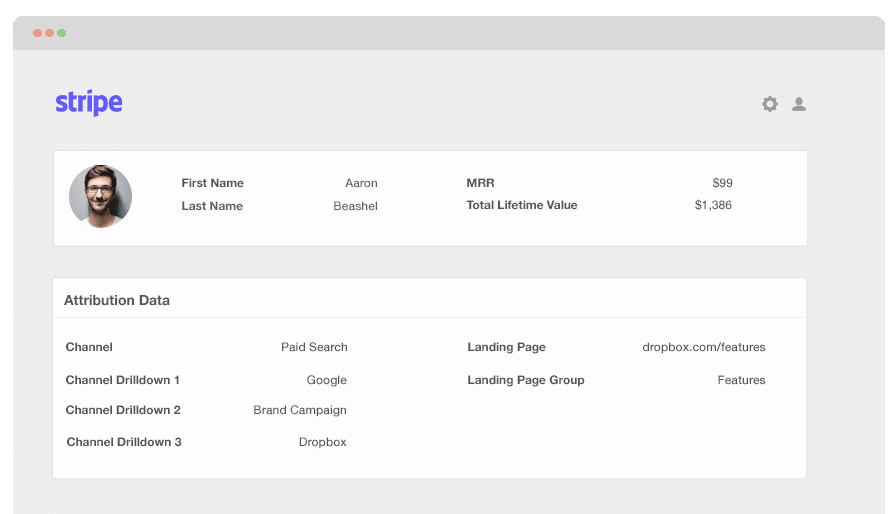
You're using Google Analytics to know what marketing channels are driving visitors to your website, but are you able to identify which of those marketing channels and campaigns are actually driving signups, customers & revenue?
If not, then what you need to do is to integrate Google Analytics data, such as Landing Page and Channel, into Stripe. By doing so, you'll be able to see which channels, campaigns & content are generating you customers & revenue and you'll know what you need to do more of to grow.
In this article, we'll show you how to use Attributer to send Google Analytics data into Stripe.
What is Attributer?
Attributer, in simple terms, is a small snippet of code that you insert on your website.
Once it’s on your site, Attributer will scan some technical things every time a visitor arrives at your site in order to determine where they came from. Afterward, Attributer categorises each visitor into to a series of channels (like Paid Special, Paid Search, Organic Search, etc.) and stores this information in the visitor’s browser as a cookie.
Then when a user submits a form on your site (such as the signup form for your product/service), Attributer sends the Channel information into Stripe along with the customers details.
Having this marketing attribution data in Stripe can be used to answer questions like:
- How many customers have I generated from my LinkedIn Ads?
- What’s the average MRR of customers from my Facebook Ads vs. customers from my Google Ads?
- What’s the churn rate of customers from organic Google searches?
Attributer was originally built by a SaaS marketing professional who needed a way to get Google Analytics data into his backend tools to see which channels & campaigns were actually growing revenue.
After using it himself for a while, he realised it could be useful to others and turned it into a product. Today Attributer runs on hundreds of websites and provides marketing attribution data on over 3 million visitors to those sites each month.
4 steps for integrating Google Analytics data into Stripe
Using Attributer to get Google Analytics data into Stripe is easy. Here's how to do it in 4 easy steps:
1. Add hidden fields to your forms
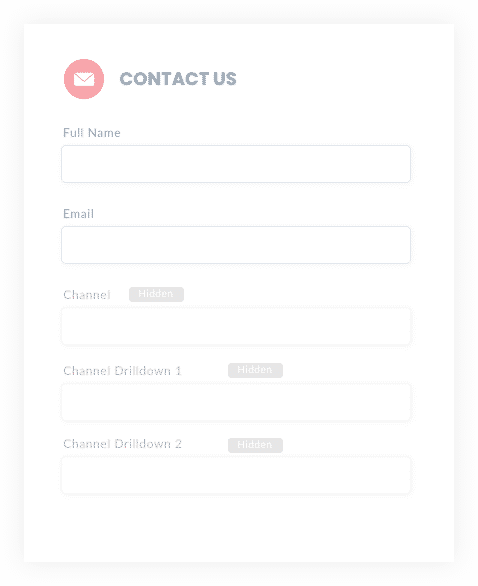
The first step towards integrating Google Analytics data into Stripe is to add a series of hidden fields to your forms.
The hidden fields you want to include are:
- Channel
- Channel Drilldown 1
- Channel Drilldown 2
- Channel Drilldown 3
- Landing Page
- Landing Page Group
Alternatively, you can write a simple bit of javascript to pull the data from the cookie and send it through to Stripe when a user completes your signup form. This is handy if your signup form includes the ability to signup with a Google or Facebook account, as these allow a user to complete the signup process without actually completing a form (which means adding hidden fields wouldn't work). For more information on this, check out this help article.
2. Attributer automatically completes the hidden fields with Google Analytics data
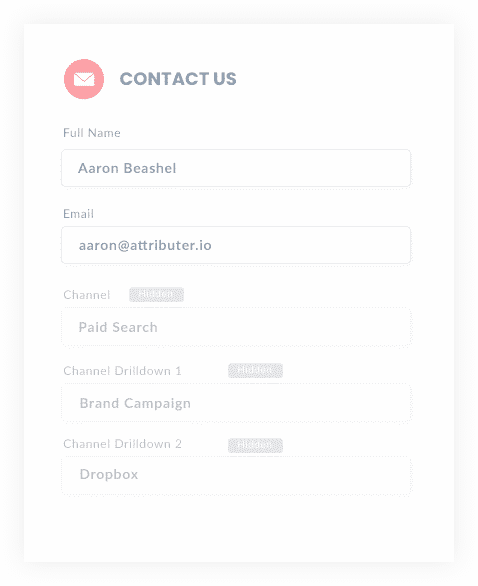
Attributer monitors where your visitors are coming from and then when they complete a form on your website, it populates the hidden fields with Google Analytics data.
As an example, if I was a marketer at Salesforce and a visitor came to my website from my Brand campaigns in Paid Search, it would populate the hidden fields as follows (depending on the UTM parameters I used behind my ads):
- Channel = Paid Search
- Channel Drilldown 1 = Google
- Channel Drildown 2 = Brand Campaign
- Channel Drilldown 3 = Salesforce
On top of the information on Channel, it would also capture the visitor's first landing page (I.e. salesforce.com/blog/best-crm-software) and the first landing page group (I.e. /blog)
3. Google Analytics data is passed into Stripe
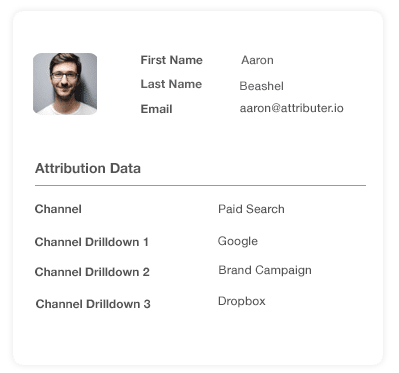
Whenever a visitor submits a form on your website, the Google Analytics data stored in the cookie is passed into Stripe alongside the other data entered by the visitor (i.e., their name, email, phone number, etc.)
4. Run reports to know what channels are driving signups, customers & revenue
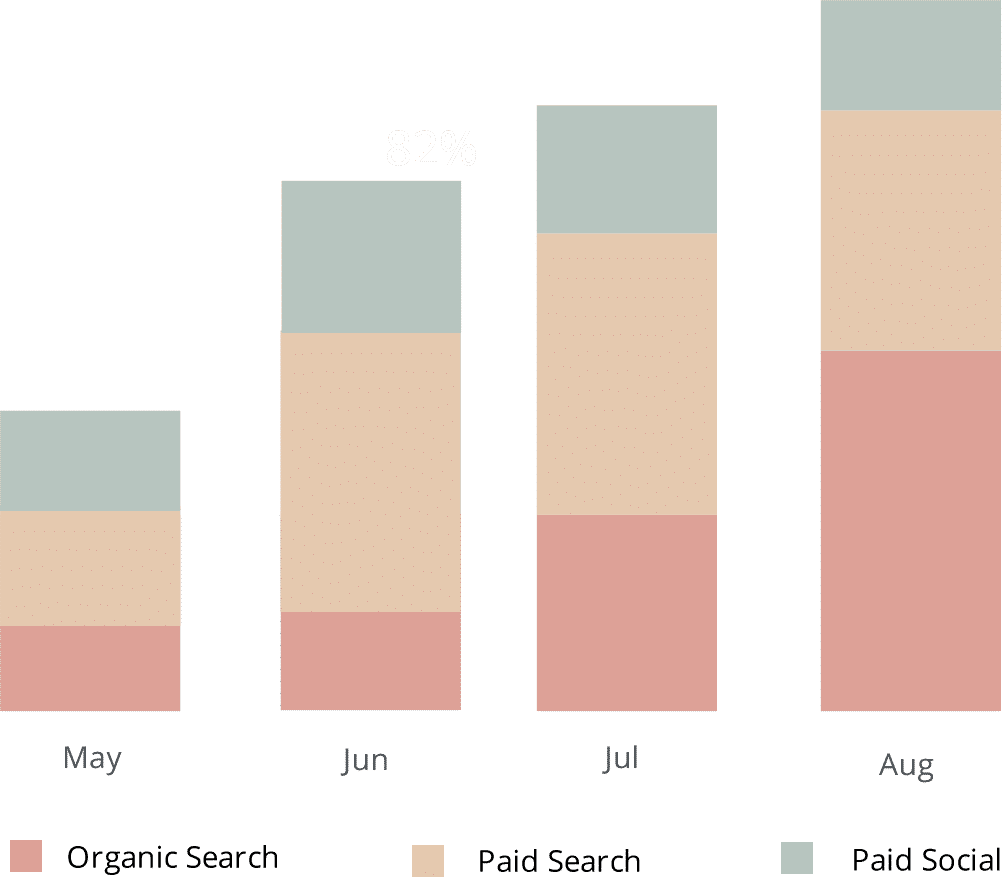
Once the Google Analytics data is in Stripe, you can use it to run reports that provide insight into how your different marketing channels and/or campaigns are performing.
These include:
- New Trials added each month by Channel or Campaign
- Trial to Customer conversion rate by Channel or Campaign
- New Customers added each month by Channel or Campaign
- New MRR added each month by Channel or Campaign
- New ARR added each month by Channel or Campaign
- ARPU by Channel or Campaign
- Lifetime Value by Channel or Campaign
- Customer Churn Rate by Channel or Campaign
- MRR Churn Rate by Channel or Campaign
- Many more metrics
What data gets passed into Stripe
Based on our experience at Attributer, we strongly believe that there are two key elements to attribution:
- Channel - How did visitors arrive on your website? Usually one of Organic Search, Paid Search, Paid Social, Referral, etc.
- Landing Page - What content on your site did they find appealing? It could be your Features pages, blog, ebooks, etc.
To help you get answers to these questions, we built Attributer. It gathers all the data needed for you to reach informed answers to the questions above.
1. Marketing Channel Data
Attributer automatically gathers data on what channel your leads come from (i.e., Paid Search, Paid Social, Organic Search) and further detail on each channel (i.e., For Paid Search, it also captures the Campaign, Ad Group, Keyword, etc.)
2. Landing Page Data
Attributer immediately captures the first page the user sees on your site (i.e., dropbox.com/blog/best-file-storage-tools) along with the page's category (i.e., Blog).
This data is beneficial if you want to view all of your related content as one. For instance, you will be able to see how many signups & customers your blog is generating as a whole, as well as drill down into individual blog posts' performance.
What you can do with this data
As soon as the Google Analytics data is inside Stripe, it can be used in several ways:
1. Report on Channels
Since the Google Analytics data is right inside Stripe, it is possible to run reports that show answers to questions like:
- How many signups have my Facebook Ads generated?
- What's the Signup-to-Customer conversion rate of leads that originated from your Facebook Ads?
- What's the exact number of Customers did my Facebook Ads generate?
- How much MRR or ARR has been generated by your Facebook Ads?
- What's the Lifetime Value of customers from your Facebook Ads, and how does that compare to other channels?
- What's the overall ROI of your Facebook Ads (spend/revenue generated)?
Running reports can be done using Stripe's own reporting tools, or you can send the data to any of the analytics and business intelligence tools that integrate with Stripe to run more advanced reports there.
2. Report on Content
Because Attributer also captures data about the visitors’ landing page (landing page group), you can also run reports that show how your different content pieces are performing.
For example, you can create reports that show things like:
- How many sign-ups did I get from my blog?
- Which blog posts have got me the most sign-ups?
- Which blog posts are converting people into Customers?
- What is the ROI of my blogging efforts?
Wrap up
Attributer is an excellent solution if you need to integrate Google Analytics data into Stripe.
Attributer is easy to install, and once it’s working it allows you to create detailed reports & dashboards right inside Stripe. These reports provide you with insight regarding the performance of your advertising campaigns, content, SEO efforts, and more.
What’s more is, it’s free to get started. So what are you waiting for? Start your free trial today and find out if Attributer is for you.
Get Started For Free
Start your 14-day free trial of Attributer today!

About the Author
Aaron Beashel is the founder of Attributer and has over 15 years of experience in marketing & analytics. He is a recognized expert in the subject and has written articles for leading websites such as Hubspot, Zapier, Search Engine Journal, Buffer, Unbounce & more. Learn more about Aaron here.
